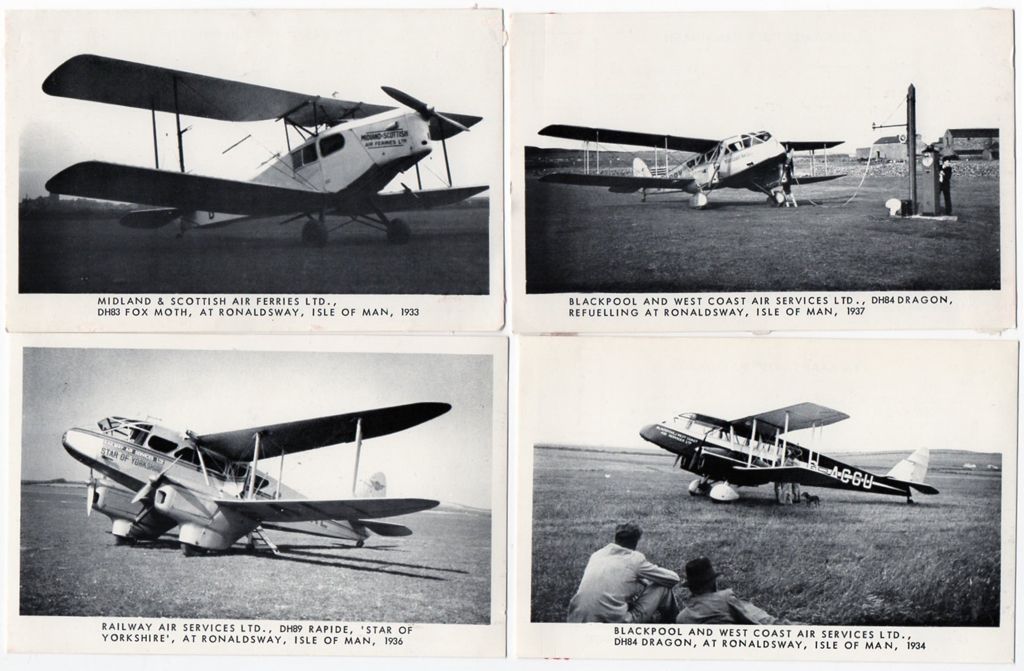|
|
Post by jetjockey on May 5, 2014 10:59:55 GMT 1
Was getting rid of some old books and found these postcards inside  Are those people in the bottom right waiting to board or just spotting JJ |
|
|
|
Post by acklington on May 5, 2014 17:54:14 GMT 1
Nice find 'JJ'!
Those four postcards are well known, and probably fairly common. The might fetch a couple of quid each in good condition, and more if there is anything interesting on the back.
The location is the pre-war grass airfield on the Derbyhaven side. The area still exists within the modern airfield, and if you add the modern airport Fire Station to the back of the top right photo, it will give you the location. In that photo is the refuelling pump, and hidden in the present-day long grass, near the entrance to the Fire Station, can be found a rusty bit of metal poking out of the ground - which is the remains of said petrol pump!
At the start of WW2 this pre-war grass airfield was requisitioned by the Air Ministry, and became RAF Ronaldsway. The only additions were some temporary blister hangars, used by the Air Defence Gunners School. They had a variety of target towing aircraft including Hawker Hectors, Westland Wallace, Gloster Gauntlet, and later Westland Lysanders. In 1943 the Admiralty took over the airfield, and in 1944 opened the greatly enlarged HMS Urley / RNAS Ronaldsway.
However, from 1939 to 1945 a civil air service (under military control) continued to operate from the Derbyhaven side, using DH 89a Rapides, camouflaged but retaining civil registrations. Liverpool was the main destination. Occasionally there were also visiting airliners (also civil registered), bringing in enemy aliens for internment on the Island. The most common of these visiting airliners were the four engined DH Albatross.
Some 10 plus years ago, when a new fire training ground was being excavated (towards the buildings visible in the top right photos), some suspicious ordnance was found buried in the ground. The bomb disposal unit were called in, and a small controlled explosion produced a much bigger bang than the Army bloke expected! Also found buried were some thin cylindrical cases, corroded, but with visible holes punched in them. After a bit of research, it turned out that these cylinders were nerve gas canisters, use by Lysanders over enemy beach-heads for the use of! When no longer required, the 'approved' disposal method for these canisters was to dig a hole, cover them in quicklime, and shoot holes in them with a shotgun!
'Elf 'n Safely eat your heart out!
|
|
|
|
Post by jetjockey on May 5, 2014 20:51:56 GMT 1
Thanks for the info aklington very interesting and informative the cards are in very good condition
plain on the back and numbered 455 of 500 and dated 1986
JJ
|
|